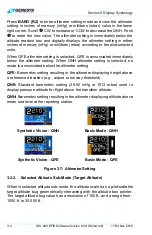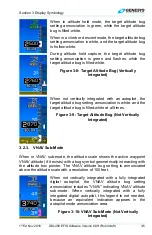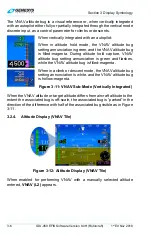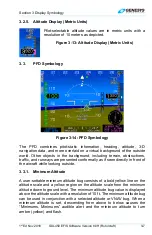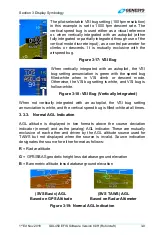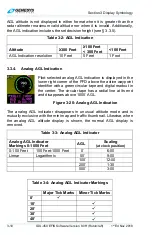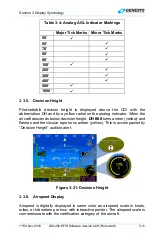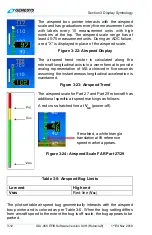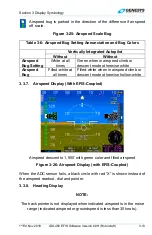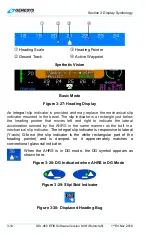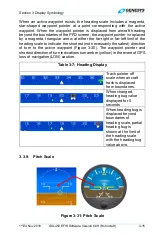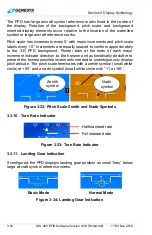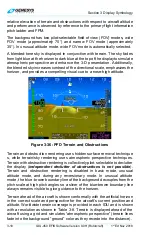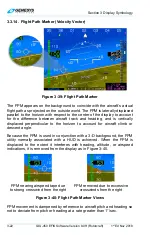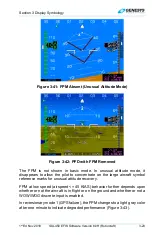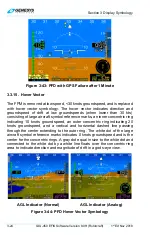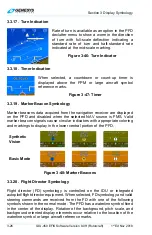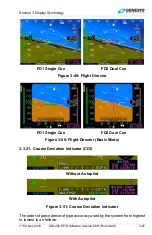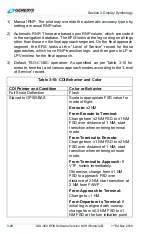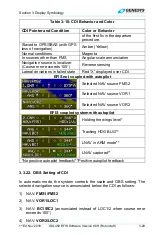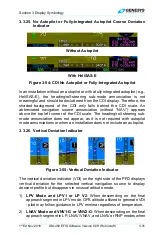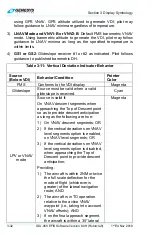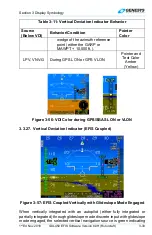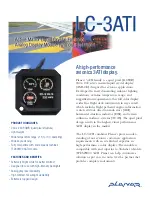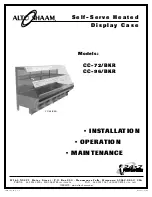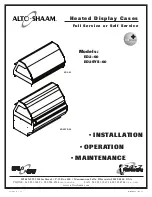
Section 3 Display Symbology
3-18
IDU-450 EFIS Software Version 8.0H (Rotorcraft)
1
st
Ed Nov 2018
relative elevation of terrain and obstructions with respect to aircraft altitude
and performance is observed by reference to the primary flight information
pitch ladder and FPM.
The background has two pilot-selectable field of view (FOV) modes, wide
FOV mode (approximately 70°) and narrow FOV mode (approximately
35°). In unusual attitude mode, wide FOV mode is automatically selected.
A blended-tone sky is displayed in conjunction with terrain. The sky fades
from light blue at the horizon to dark blue at the top of the display to simulate
atmospheric perspective and enhance the 3-D presentation. Additionally,
the blended sky increases contrast of the directional scale, emphasizes the
horizon, and provides a compelling visual cue to a nose-high attitude.
Figure 3-36: PFD Terrain and Obstructions
Terrain and obstruction rendering uses hidden surface removal technique
s, while terrain/sky rendering uses atmospheric perspective techniques.
Terrain with obstruction rendering is collectively pilot-selectable to declutter
the display (
independent declutter of obstructions is not possible
).
Terrain and obstruction rendering is disabled in basic mode, unusual
attitude mode, and during any reversionary mode. In unusual attitude
mode, the blue -brown boundary line of the background decouples from the
pitch scale at high pitch angles so a sliver of the blue-brown boundary line
always remains visible to give guidance to the horizon.
Terrain ahead of the aircraft is shown conformally with the artificial horizon
in the correct scale and perspective for the aircraft’s current position and
altitude. Worldwide terrain coverage is provided in each IDU and is shown
with a resolution as shown in Table 3-8. Terrain is displayed ahead of the
aircraft using a grid and simulates “atmospheric perspective” (terrain lines
fade into the background “ground” color as they recede into the distance).

